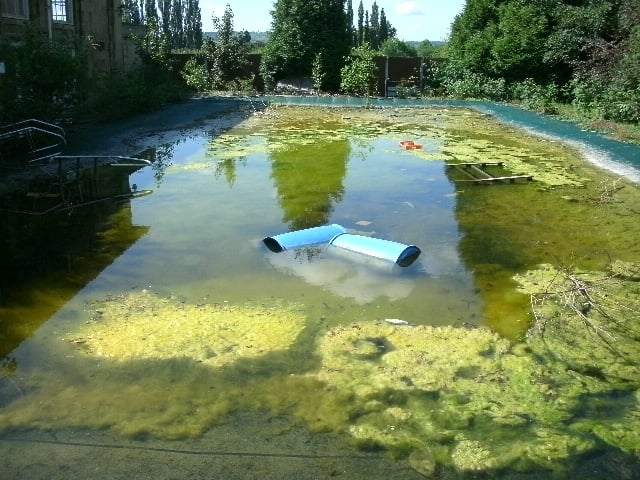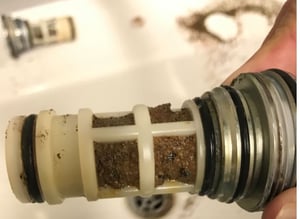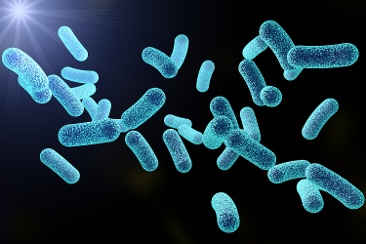
It’s common for wholesome water to contain aquatic bacteria as our intention is for ‘potable water’ to be ‘hygienically safe’ (in accordance with the requirements of the water undertaker), rather than sterile.
Indeed, bacteria such as Pseudomonas and Legionella may to some extent be considered a part of ‘normal’ drinking water composition when wholesome water ‘enters’ a building. So, if this is the norm, then why do we have established water control measures?
Pre-existing conditions for Legionella and Pseudomonas aeruginosa
Whilst we accept that bacteria such as Legionella species (spp) and Pseudomonas aeruginosa live preferentially in the environment and that these Gram-negative, soil-derived bacteria frequently reside within our water systems, it’s also important to recognise the differences between planktonic (or free-floating) and biofilm bacteria. This will enable us to understand the rationale for maintaining water systems’ ‘control’ (traditionally centred on temperature control and the movement of water) in accordance with established guidance notes.
Pseudomonas and Legionella bacteria in their ‘planktonic’ form, generally pose little threat to human health, due to the documented impact of temperature on:
- Bacterial viability (whether they live or die).
- A bacterial cell’s propensity to multiply/grow.
- Developing ‘virulence factors’ (bacterial defence characteristics).
Moreover, hot water temperatures of ≥60˚C will typically cause cell lysis (breaking open the bacterial cell wall) after 2 minutes of exposure time. Hot water temperatures of >70˚C will kill ‘planktonic’ bacterial cells upon contact. Conversely, cold-water temperatures of <20˚C will typically encourage waterborne bacteria to stay dormant (remaining viable but not multiplying). The impact of these parameters substantiates the rationale for identifying temperature as our ‘traditional’ method of control.
Essentially, good water system control is not about creating a sterile environment, but more about managing ‘ubiquitous’ bacterial contaminants within safe limits. Therefore, whilst accepting the ‘presence’ some free-floating bacterial contaminants – our water management efforts are centred on mitigating the growth and proliferation of biofilm bacterial contaminants.
Primary considerations for the control of waterborne bacteria
If we consider the ‘principal conditions’ that support the growth of waterborne bacteria within water distribution systems, ie; water temperatures between 20-45˚C and inadequate water flow, having already discussed the merits of good temperature control, it’s equally important to maintain adequate water flow within water systems – especially complex water distribution systems, such as those associated with larger estates (Hospitals, Universities, Hotels, Care Homes, etc.).
Inadequate water usage within such estates may encourage the settling of nutrients within water systems which in-turn may provide a ‘food source’ for waterborne bacteria. Moreover, as nutrients accumulate within a water system - waterborne bacteria may adhere to the inner surface of pipework to utilise these nutrients for growth and eventual proliferation.
This essentially describes the early stages (conditioning phase) of biofilm formation and underpins the importance of maintaining good system pressure and adequate water usage – to ensure that nutrients don’t settle within water systems and all freely-suspended particles and microorganisms are flushed to drain, to adequately mitigate the risk of biofilm formation. From a ‘practical perspective’ this also supports the importance of identifying and flushing infrequently used outlets as well as identifying and remediating dead-legs and dead-ends to help with reducing the likelihood of stagnation within a water system.
Biofilm bacteria and its remediation
 Biofilm bacteria are different to free-floating (planktonic) bacterial cells in that they may gain protection from our traditional method of control. As such, it’s accepted that the use of heat is not the most robust treatment strategy, as biofilms may increase the temperature tolerance of bacterial cells living within them, due to their ‘architecture’ and density. In addition, biofilm bacteria may demonstrate phenotypic (observable characteristic) differences to their previous (planktonic) form and develop antimicrobial resistance characteristics, by virtue of propagating (growing) within a biofilm containing bacteria of varying antimicrobial resistance.
Biofilm bacteria are different to free-floating (planktonic) bacterial cells in that they may gain protection from our traditional method of control. As such, it’s accepted that the use of heat is not the most robust treatment strategy, as biofilms may increase the temperature tolerance of bacterial cells living within them, due to their ‘architecture’ and density. In addition, biofilm bacteria may demonstrate phenotypic (observable characteristic) differences to their previous (planktonic) form and develop antimicrobial resistance characteristics, by virtue of propagating (growing) within a biofilm containing bacteria of varying antimicrobial resistance.
The ‘pili’ structures on the surface of the (Gram negative) bacterial cell wall have been associated with binding to the inner surface of pipework (mentioned above), but have also been associated with the exchange of resistance characteristics (genes) between bacteria- increasing the ‘virulence’ of waterborne bacteria and thus making them more difficult to treat.
For these reasons, careful consideration should be given to the choice of remediation strategy when controlling bacterial contamination within water systems, as inevitably some will be more effective than others – depending on the condition of the water system treated and the strategy of use employed. Key considerations may be as follows:
- The age of the water system and associated dilapidation – including the presence of corrosion scale.
- Materials of construction of water systems.
- Organic material and particulate that may support the growth of waterborne bacteria.
- The nature of bacterial contamination when detected (biofilm or planktonic).
Transmission pathways of waterborne bacteria
Whilst understanding the ecology of waterborne bacteria and the limitations of a given water system will undoubtedly help when choosing an effective treatment regimen, it’s also important to have a strategy for use. As such, there is merit in understanding whether contaminants are systemic or local to specific assets, so that systems and or outlets can be disinfected accordingly.
Understanding how bacterial contaminants thrive and survive within man-made water systems and the controls employed to manage such contaminants within safe limits, will undoubtedly form the backbone of an effective water management approach, but it’s also important to acknowledge the different ‘transmission pathways’ associated with bacterial contaminants.
Transmission pathways in this regard, can simply be described as the ‘route’ which a bacterial contaminant uses to cause infection and subsequent disease. Transmission pathways can be broken down into three main types:
- Direct contact
- Ingestion
- Inhalation/aspiration
Opportunistic bacterial contaminants (such as Pseudomonas aeruginosa) are often associated with ‘direct contact’ and await a breach in our main defence (intact skin), whereas other bacteria may cause infection following ingestion (of enteric bacteria such as E. coli) or inhalation/aspiration (of aerosolised water containing Legionella bacteria).
As previously discussed, whilst it’s not unusual for wholesome water to contain microbial contaminants, there are exceptions and water suitable for human use/consumption should not be contaminated with enteric bacteria (E. coli) or parasites (Cryptosporidium). Therefore, within the UK, infection caused by these pathogens would not normally be associated with the consumption of potable water managed by the respective water undertaker.
For this reason, the predominant transmission pathways associated with waterborne infections are direct contact and inhalation/aspiration – thus centring our efforts on managing waterborne bacteria associated with these pathways (Pseudomonas and Legionella spp) in accordance with established guidance and legislation within both the healthcare and non-healthcare environments. (see HTM 04-01 Parts A, B and C and HSG 274 Parts 1, 2 and 3).
 Legionnaires’ Disease (predominantly caused by Legionella pneumophila) is however considered a ‘preventable’ disease in the eyes of the law, which necessitates adherence to (Health & Safety Executive (HSE)) precautions, to reasonably and practicably prevent any occurrence of this disease (see HSG 274 Part 2, table 2.1 for planned preventative maintenance (PPM) guidance). These precautions provide useful guidance for the identification and safe management of water risk systems associated with Legionella control (showers, water storage vessels etc) as well as temperature control within hot and cold water systems.
Legionnaires’ Disease (predominantly caused by Legionella pneumophila) is however considered a ‘preventable’ disease in the eyes of the law, which necessitates adherence to (Health & Safety Executive (HSE)) precautions, to reasonably and practicably prevent any occurrence of this disease (see HSG 274 Part 2, table 2.1 for planned preventative maintenance (PPM) guidance). These precautions provide useful guidance for the identification and safe management of water risk systems associated with Legionella control (showers, water storage vessels etc) as well as temperature control within hot and cold water systems.
Whilst we are not mandated to follow any or all of the aforementioned ‘guidance notes’, Duty holders should be mindful that such guidance is considered the ‘minimum requirement’, - should they not to follow this guidance, then demonstrable evidence will be required to show that compliance has been achieved by other means, which either meet or exceed HSE requirements/expectations.
Feel free to reach out if you have any questions about this blog or if you would like to consult with one of our experts for further advice on water hygiene.
Editors Note: The information provided in this blog is correct at date of original publication – May 2020.
© Water Hygiene Centre 2020








